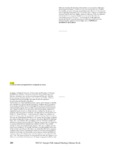Use este identificador para citar ou linkar para este item:
http://www.alice.cnptia.embrapa.br/alice/handle/doc/1068126| Título: | Graphene oxide toxicological effects on daphnia and hydra. |
| Autoria: | CASTRO, V. L. S. S. de  CLEMENTE, Z.   MARTINEZ, D. S.   JONSSON, C. M.   VALLIM, J. H.   BLUMEL, S.   |
| Afiliação: | VERA LUCIA SCHERHOLZ S DE CASTRO, CNPMA; Z. CLEMENTE; D. S. MARTINEZ; CLAUDIO MARTIN JONSSON, CNPMA; JOSE HENRIQUE VALLIM, CNPMA; S. BLUMEL. |
| Ano de publicação: | 2016 |
| Referência: | In: SETAC EUROPE ANNUAL MEETING, 26., 2016, Nantes. Proceedings... Brussels: SETAC, 2016. Ref. TU040. |
| Páginas: | p. 202. |
| Conteúdo: | The increased use of nanomaterials products requires robust strategies to identify risks when they are released into the environment. Graphene and its derivatives are promising candidates for biomedical applications and as potential advanced water purification agents. However, little is known about their ecotoxicological risks. Aquatic toxicity tests are performed with different aquatic organisms as daphnia and hydra in order to evaluate the risks resulting from the presence of graphene oxide (GO) in the environment. The following GO concentrations were tested: 0, 1, 10 and 100 mg.L-1. Acute toxicity to D. magna was evaluated in a period of 48 hours when was recorded the number of moving subjects in order to determine the CE5024h and CE5048h (n = 24 / group). The percentage of daphnia presenting mobility after 48 hours of exposure was greater than 60% in all groups. There was a concentration effect of graphene oxide (p = 0.02) and mobility was 20% lower in group exposed to 100 mg.L-1 than the control group. To evaluate the occurrence of the effect of sublethal concentrations for 96 h, it was evaluate neonate D. similis growth rate through exposure to the same conditions used for acute toxicity testing (n = 10 / group). The bodies were photographed at the start of the test and every 24 hours. Also, there was studied the effect of the organisms mobility during 96 hours calculating the median survival time of the population, defined as the average time between the start of exposure and the immobility of organisms. There was a sharp decline when the organisms were subjected to 100 mg. L-1 GO. The Hydra attenuata test was performed for 96h. The organisms were observed every 24 hours for the presence of changes ranging from tentacles with bulbs (low toxicity) till shortening of the tentacles (severe toxicity), tulip aspect and disintegration (lethal). A mean score for each concentration was calculated. No mortality was observed in any concentration tested. However, it was observed some morphological alterations after 72h of 100.0 mg.L-1 exposure as clubbed and shortened tentacles and body slightly contracted. Exposures of the test organisms indicate that GO do not present a lethal risk or adversely affect them at concentrations lower to 10.0 mg. L-1. Even though the results apparently demonstrate that GO currently do not pose a serious risk, it may exert some damage in aquatic organisms tested at higher doses. |
| NAL Thesaurus: | Graphene Daphnia Hydra |
| Palavras-chave: | Ecotoxicologia |
| Tipo do material: | Resumo em anais e proceedings |
| Acesso: | openAccess |
| Aparece nas coleções: | Resumo em anais de congresso (CNPMA)  |
Arquivos associados a este item:
| Arquivo | Descrição | Tamanho | Formato | |
|---|---|---|---|---|
| Castrographene.pdf | 91,87 kB | Adobe PDF |  Visualizar/Abrir |









